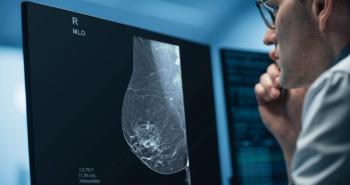
Report from ARRS: Telemammography over Internet proves feasible, cost-effective
Nearly 30,000 cases and three years of experience have confirmed that the transmission and interpretation of digital mammography exams to and from a remote location through commercially available high-speed cable Internet access is feasible, safe, reliable, and cost-effective, according to a Columbia University study.
Nearly 30,000 cases and three years of experience have confirmed that the transmission and interpretation of digital mammography exams to and from a remote location through commercially available high-speed cable Internet access is feasible, safe, reliable, and cost-effective, according to a Columbia University study.
"There haven't been any glitches since we began, but we have made long-distance transmission better and faster," said principal investigator Dr. Alan R. Melton, an assistant professor of radiology at Columbia. "We are refining the system, establishing online dictation, increasing transmission speeds, increasing the efficiency of the routing, and diminishing downtime."
Melton and colleagues reviewed more than 29,500 cases produced from two full-field digital mammography devices and read by a digital computer-aided detection system at an offsite screening facility. Cases were sent to a mammography workstation in a primary diagnostic center using a two-way DICOM protocol. They went through a virtual private network via cable Internet.
Back in 2005, transmission of an average 125-MB, Mammography Quality Standards Act-compliant case without compression and in real-time took approximately 24 seconds. After the proper hardware and network upgrades, a case of similar image quality can be transmitted today in less than eight seconds, according to Melton. Case turnaround from obtaining the images to final report ranges from 10 minutes to two days.
Melton presented his group's findings Monday at the 2008 American Roentgen Ray Society meeting in Washington, DC.
There are serious concerns regarding the future of screening mammography, according to Melton. The future looks bleak, as the demand for mammography services increases and the pool of well-trained mammography fellows dwindles.
As digital mammography increases its penetration into the system, radiologists should start considering the establishment of regional telemammography screening centers with highly skilled radiologists and mammographers, he said.
"The Europeans are already using the Internet to solve this impending crisis," he said.
For more information from the Diagnostic Imaging archives:
Newsletter
Stay at the forefront of radiology with the Diagnostic Imaging newsletter, delivering the latest news, clinical insights, and imaging advancements for today’s radiologists.




























